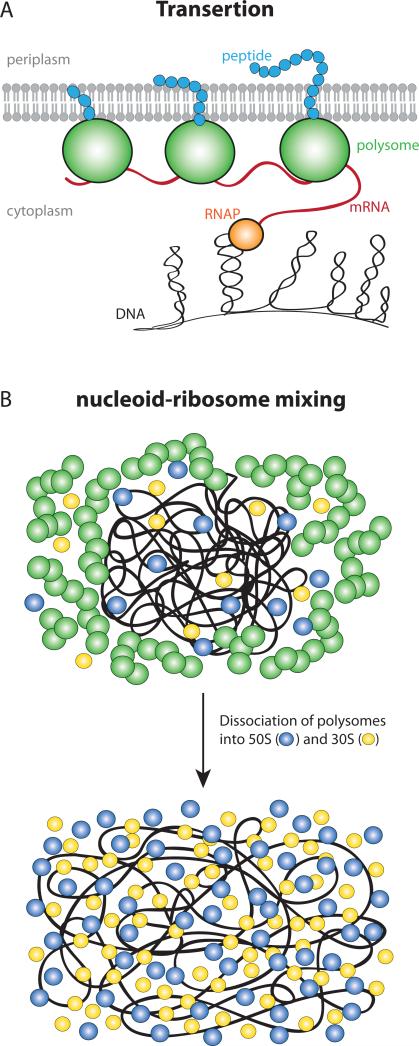Figure 5.
(A) Schematic of DNA-tethering to the membrane via transertion inside E. coli cell. (B) Schematic of nucleoid-ribosome mixing hypothesis. In normal growth condition 70S-polysomes dominate, and they are immiscible with the nucleoids due to excluded volume and entropic effects. This creates spatial segregation between the polysomes and nucleoid (top). Rif treatment causes dissociation of 70S-polysomes into free 30S and 50S subunits. The 30S and 50S subunits mix readily with the nucleoids and cause expansion of the nucleoid (bottom).

